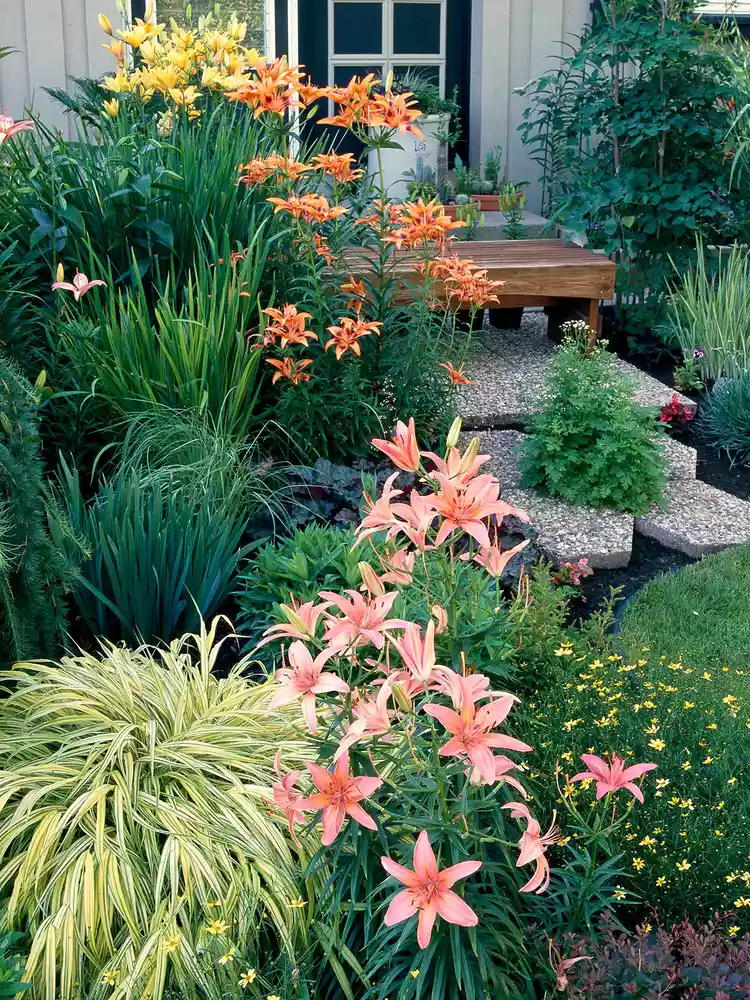Let the color wheel work for your garden. It offers simple solutions for combining plants and flowers.
Meet the Color Wheel
The color wheel is a gardener's best friend when it comes to creating a pleasing garden palette. It's based on the three primary colors -- red, yellow, and blue. A full color wheel resembles a rainbow, with red and orange next to yellow, followed by green, blue, purple, and violet. Generally speaking, warm colors are red through chartreuse while cool colors are green through violet.
Choice One: Complementary Colors
One natural way to combine colors in the garden is to choose complementary colors. That means selecting plants in colors that are across from one another on the color wheel. For example, red is across from green, orange is across from blue, and, as in this bright array, yellow is across from purple.
Here, lovely pink and purple anemone are a fun contrast to golden-yellow California poppy.
Choice Two: Analogous Colors
An analogous palette is also a good way to create garden color harmony. In this scheme, hues that are next to each other on the color wheel -- red and yellow, yellow and green, even fuchsia and purple as in this photo -- mix well together.
Shown here are pink foxgloves, blue delphiniums, a pink hydrangea, and red snapdragon.
Choice Three: Monochromatic Colors
While it's a simple choice, a single color also can supply a garden with visual impact. In a monochromatic color scheme, you can keep all plants the same hue, or you can integrate different tones of the same shade. Plants can all be the same variety, as in this pink garden (of mallow and bee balm), but a good way to vary the vignette is to choose plants that offer the same bloom color but mix up the foliage size and shape.
Choice Four: Warm Colors
A plant also supplies a landscape with mood based on its color tones. For example, warm tones of red and orange have movement, bringing vibrancy and energy to landscapes such as this one filled with the textural foliage of bloodgrass, cordyline, and bronze sedge.
Choice Five: Cool Colors
Cool colors, on the other hand, create a low-key, soothing mood. Cool colors include blues, purples, and pale pastels, such as these pink petunias paired with white sweet alyssum and burguny 'Redbor' kale.
Choice Six: A Triad of Colors
Another cue from the color wheel is to select plants that are spaced equally apart from one another and combine them; it's called a triad. It's a trickier arrangement to achieve, but it's one that can definitely make an impact in terms of color and visual interest. Here, it's done with orange zinnia, Double Knockout roses, and Mexican sage.
Choice Seven: Double Complements
To add more plant and color variety to a garden, you can also employ a more complex color composition, such as a double complementary. To do that, choose two adjacent colors -- red (dahlias used here) and orange-yellow (black-eyed Susan shown here), for example -- and pick their complements across the color wheel. In that case, it's green and purple.
More Complementary Ideas
Purple and yellow pops up in plenty of gardens, and for good reason: The two hues are the prime example of matching complementary colors from the color wheel for an arrangement of flowers that's pleasing to the eye. Here it's a yellow pansy with blue salvia.
More Analogous Ideas
This lovely trio of lilies gently steps around one side of the color wheel for a lush pastel combination that showcases the calmer, cooler side of orange, pink, and yellow.
Video: More Tips on Using Color
Watch this quick video and get even more tips for filling your garden with lots of color.




















